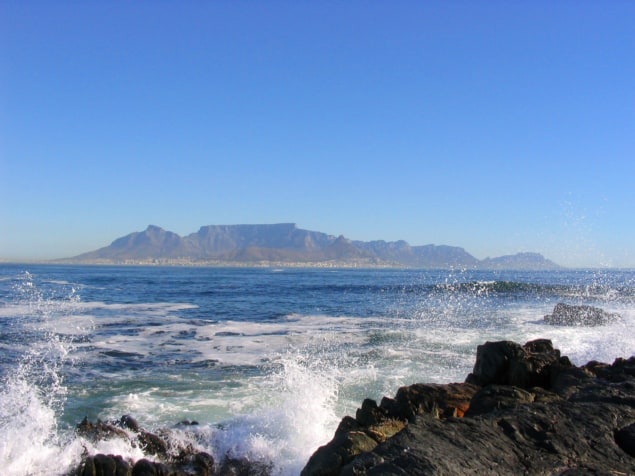Cape Town ‘Day Zero’ water crisis due to migrating moisture corridor
22 Jan 2019
The “Day Zero” water crisis that threatened the city of Cape Town in South Africa last year was due to an expansion of stable conditions in the subtropics that pushed rainfall farther south, according to a meteorological analysis. The researchers believe their study highlights the vulnerability of the Cape Town area – and other areas with dry, Mediterranean-type climates – to climate change.
“Although droughts are relatively frequent in these areas, the severity and frequency of occurrence in regions like Cape Town, California [in the US] and the Iberian Peninsula [in south-west Europe], among others, appears to be rising,” says Pedro Sousa of the University of Lisbon in Portugal. “This has been particularly notable in the last few years, which correspond exactly to the warmest years ever observed at the global scale.”
The South African government announced the risk of “Day Zero” in the latter half of 2017. The country’s largest city, which together with the greater Cape Town area has 3.7 million residents, faced the unprecedented prospect of having to turn off water supplies due to the worst drought in a century. To avoid the crisis, citizens were limited to 50 litres of water per person per day.
One year later, Day Zero has not yet arrived. But water use is still restricted, and researchers still debate the sequence of events that led the region to the brink of crisis.
“[There was] the real chance of Cape Town being the first large metropolitan area in the world to run out of water,” says Sousa. “This immediately led us to raise some scientific questions and to rapidly analyse the event purely from a meteorological and climatological point of view.”
Sousa and colleagues based at the University of Lisbon and the University of Cape Town examined daily meteorological data going back to 1979 in a bid to understand the large-scale atmospheric dynamics that led to particularly low rainfall in South Africa.
The team found that the main driver was an expansion of the usual stable anticyclones in the subtropical Southern Atlantic and Southern Indian oceans. This expansion pushed the storm corridor – the one carrying the storms that in the past provided Cape Town with much of its rain – farther south, away from South Africa.
As a result, weather fronts have missed the city, particularly during the transition seasons of spring and autumn, leading to the prolonged severe drought.
In addition, the team reckons the fact that the government’s water restrictions allowed the city to avoid the worst scenario demonstrates how much of a factor rising water-demand was in the near-crisis.
“We strongly believe that our work shows how the combined effects of unfavourable regional meteorology and human errors led to this complicated situation,” says Sousa. “I am confident that lessons like the one learned with the Day Zero water crisis will result in more awareness and better water-resources management, in order to prevent upcoming meteorologically-driven episodes of water scarcity, which will undoubtedly occur again.”
Sousa and colleagues reported the findings in Environmental Research Letters (ERL).
25/1/2019 from pjhysicsworld.com

Δεν υπάρχουν σχόλια:
Δημοσίευση σχολίου